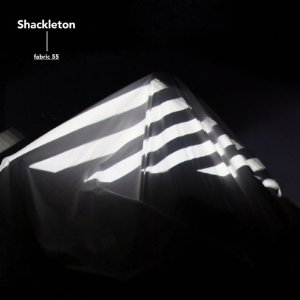In Simon Reynolds’ seminal post-punk tome Rip It Up & Start Again, he examines the themes that emerged from the fire and brimstone of the punk explosion, of breaking everything apart and rebuilding from flame scarred wreckage upward into spindly new shapes. Many bands of Thatcher’s era expressed dissatisfaction through preoccupation with the physical properties of sound and intensely evocative sonic imagery. The earliest dubstep felt like a direct continuation of that lineage – its pioneers further elevated these traits to high art or lowbrow fetish, while simultaneously directing that rage inward into music of distance and alienation. In terms of aesthetic the similarity remained fierce: dubstep too formed through the use of restraint as resistance, in this case pulling backward from the excesses of UK garage into a sort of forced asceticism. It was at that point, before its spaces began to fill again with cosmic detritus, that Shackleton began to detach from the sound that had nurtured his early productions.
That said, despite its far more expansive reach – and despite his own insistence at remaining untethered to any one sound or scene (the simplistic ‘techno crossover’ description is one particular bugbear) – his music retains certain ties to dubstep. Although the connection is loose, and he tends to work a separate pathway running parallel to its major development, the difference is largely one of evolution. The genre’s early pioneers developed a scooped sound, all cavernous low-end and percussion scattered across the surface, with barely anything in between. Over the last couple of years London’s dancefloor-centric variants took advantage of that sparse construction to pack the mid-range with toxic synths or rhythmic trickery.
By way of contrast, Shackleton keeps early dubstep’s sonic signature largely intact but uses the middle of the frequency spectrum in a far more subtle way. Sampled snatches of voice and raga-like devotional drones drift upward through the music’s core, sometimes for periods of minutes at a time before falling away. In a live context, when he works his tracks into a single unbroken stream of sound, the result is one endlessly modulating, rolling groove that appears to stretch out into eternity. Released from the tyranny of simple build-drop dynamics, it’s free to find its own level like liquid. It’s at this point where he totally diverges from the UK bass lineage, and discovers far more shared ground with the likes of PiL, Muslimgauze or Einsturzende Neubauten.
His contribution to the Fabric mix series, as well as providing a document of his totally immersive, intensely danceable live set, also works as a formidable consolidation of everything he’s put together so far. As with both Omar-S and Ricardo Villalobos’ Fabric mixes, it consists of entirely his own material. But unlike those discs’ relatively straightforward construction, where each individual track is given space to breathe, at the root of Shackleton’s mix lie the strange, claustrophobic things that happen when several collide at once and stack upon one another. Indeed, what makes fabric55 so special, and the finest addition to the series so far, is that it transcends the limits of a typical mix CD. By slicing his tracks into tiny individual pieces – lithe strands of percussion, distant, dissonant string drones, the downpitched incantations of ‘Hypno Angel’ – Shackleton is able to maintain a single motif throughout long stretches, lose it among the percussive fray then resurrect it later on during an entirely separate track.
And percussion is key here: his music is reminiscent of nothing less than a future where society as we know it has dissolved entirely, less dystopian than simply lost. His asymmetric, hand tweaked drum patterns hark back towards music’s earliest functions in gathering, celebration and release, but project forward rather than backward, to a post-digital world. The stretched tabla of ‘Deadman’ sets up an insidious, snakelike groove, beneath which fibrous dissonances billow as if caught in a crosswind. And some of the record’s most exhilarating moments come during its named interludes, when two or three tracks enmesh into a totally new whole. ‘Negative Thoughts’ slowly passes through curtains of static into the anthemic ‘Death Is Not Final’ when the ground simply drops away, leaving a single tic hanging above a void for a few seconds of tense near silence before everything crashes back in again.
With fabric55, the sound Shackleton has honed over the last few years finds its natural pinnacle. While his music remains both beautiful and compelling outside of a mix, within this collage-like context it’s lent an otherworldly, labyrinthine grace. Rather than generating atmosphere in short bursts, here it’s sustained over seventy minutes of surprisingly inviting ebb and flow. While the creeping dread of his early music remains, it’s also occasionally offset by sudden, tangible flashes of hope and outright fear. It’s during those moments that his music’s more abstract tendencies become grounded in the stark reality of life. After all, for all the time that’s passed since post-punk first developed, it seems increasingly unlikely that anything will really have changed.


